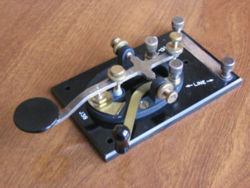|
Basic Radio Info and theory
Here you will find some answers to questions you may have asked yourself in the past. Firstly, radio ham is a fun part
of life, but before we go there, what do you think of when you turn the radio on? Where does that music and talking come from?
How do they do that, these are just a couple of questions asked by many people.
Radio waves travel at the speed of sound, so when we talk on a radio it is to us almost instantly transmitted to the other
person(s), and quite often without a thought of where or how it has derived. With the commercial terrestrial radio you will
find that they use anything up to a kilowatt where as in radio ham we can use as little as a quarter of a watt.
Some of our contacts are through repeaters, where some are are made just by simply calling CQ on the calling channel for a
QSO... The CQ is is another way of saying ""i seek you"" and the QSO is the contact
you make. There are many different ways to make contact with a person, for instance you can use voice, (cw)Morse Code,
(sstv), slow scan television, (fstv) fast scan television, rtty, Telephony and other forms of data. Further along
you will find how to learn and things like Morse code etc.
Once you hold a licence for ham radio, the sky is th limit, you can do almost anything to make contacts.
One which is keen to some operators is to make a contact with a space flight or shuttle, even satalites.
some operators use a mode known as "moon bounce", another way to make the signals travel further,
these are just some ways to make a contact over the airwaves, but you MUST have a licence to be able to transmit legally,
although you are welcome to be a SWL in most clubs, for those who are not sure of what SWL is, it is "Short Wave Listener"
which anyone can listen to but a keen SWL will know when a contact is good or not and how to achieve good contacts.

Click to download Morse Assistant
|

